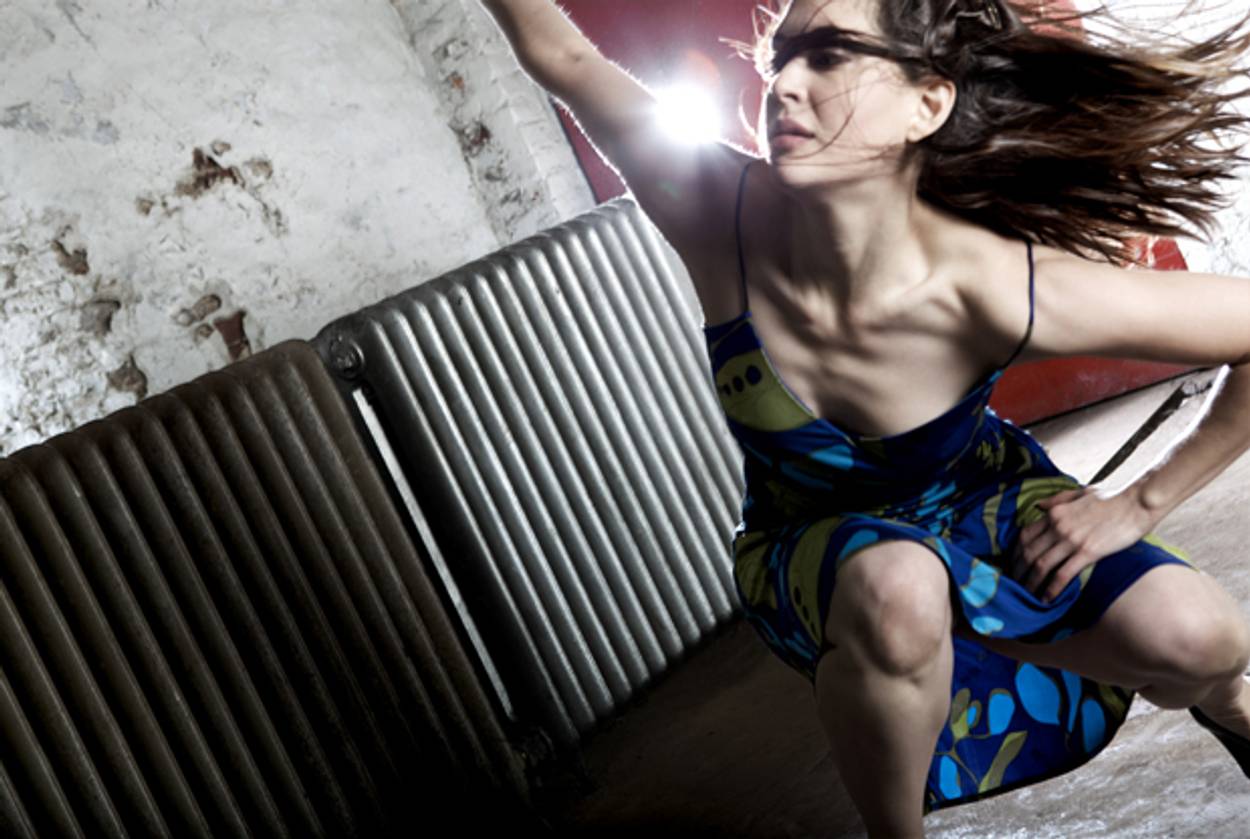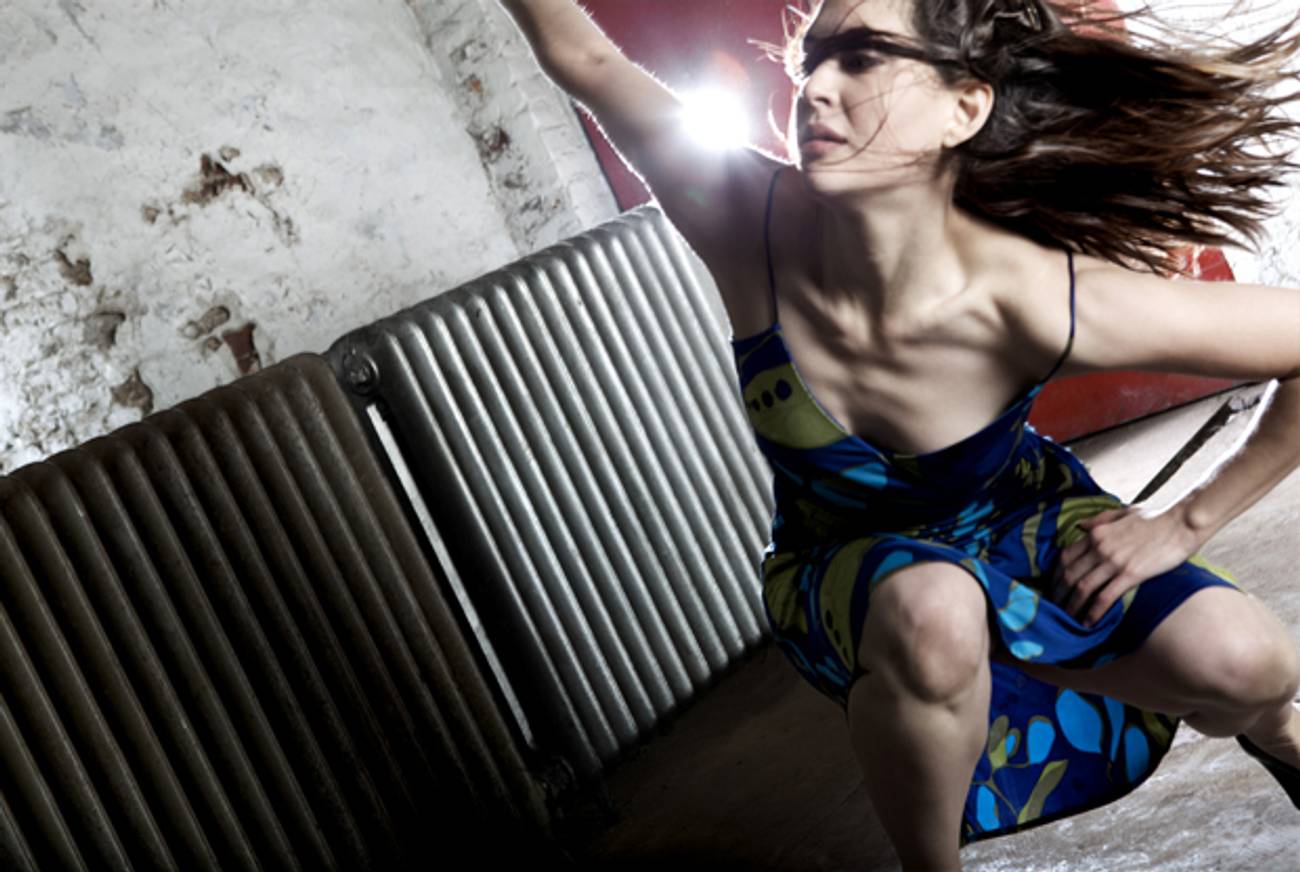Dancing Like Arabs
Native cultural mix inspires work by Israeli choreographers Zvi Gotheiner and Hofesh Schechter




Zvi Gotheiner and Hofesh Schechter are Israeli choreographers who use the language of modern dance to express their native cultural mix in ways op-ed pundits and ideologues only dream about. Gotheiner, a 20-year veteran of the New York contemporary dance scene, composes movement that is articulate, sinuous, and layered, an exuberant blend of ballet and folk. Schechter, whose company has been based in London since 2008, creates work with a rougher edge. His choreography punches and grabs, engulfing the stage with a three-dimensional physicality.
Both men began their careers in Israel but are now choreographing outside of their birthplace, allowing them to explore their heritage with a fresh, analytic perspective. Each premiered a piece this month in New York examining themes of tradition, uprising, and community.
The two choreographers represent different eras in Israeli dance. Gotheiner began as a dancer performing with the Batsheva Dance Company in the early 1970s during its first years, the era of choreography by Martha Graham and Alvin Ailey. Schechter, a student of Naharin’s transformative Gaga technique, danced with Batsheva in the 1990s. His Violet Kid examines youth uprising and revolution, where Gotheiner’s Dabke, which had its world premiere at New York Live Arts on May 31 and ran through June 3, is a deep, personal, artistic experiment in which the choreographer reveals his own memories and epiphanies about his homeland since his immigration to New York.
Dabke takes its inspiration from a famous Arab folkdance, the dabke, which in Arabic means “stamping of the feet.” Danced at weddings and celebrations throughout the Middle East, the dabke is traditionally a male dance, in which a line of men jump and stomp their feet, linking their hands or shoulders. The leader, often twirling a scarf or string of beads, improvises the steps while the rest of the dancers keep the rhythm: There is also an Israeli version called the debka that has a similar choreographic structure.
“As a kid growing up on a kibbutz in the North of Israel, every Friday night we danced folk dance,” said Gotheiner in an interview with Tablet. “Although forever in territorial conflict with their neighbors, the Israelis borrowed elements from Arab culture, like the dabke, that captured the beauty and flavor of the land. I have great admiration for the dabke dancers: They are stunning, athletic, and on occasion ecstatic. So much of their movement and the current struggles in the region are transferable to all of us.”
Dabke begins in silence, with a single man stomping his feet in intricate patterns along the stage. The other dancers, four women and three men dressed in gray earth tones, slowly join him, grasping each other’s hands and copying his rhythm while adding subtle individual flourishes. The music is a blend of rhythmic Syrian songs by Ali Eli Deek and an original score by Scott Killian, featuring chimes, recorders, and ambient sound. The electronic compositions use techno beats and recordings of street noise. Layered with the time-honored dabke music, these elements augment the feeling of modernity imposing itself on tradition.
Gotheiner used the Internet in his creative process, studying YouTube clips with his dancers and learning phrasing, hand gestures, and rhythmical footwork. “We also took emotional material from the clips,” said dancer Todd Allen. “We thought about images of the Arab world in the media—the Arab Spring, the struggles for territory—and brought these into our movement.”
Dabke has a deeply conceived choreographic structure that gracefully absorbs and builds upon Arabic motifs. The group undulates in out of swirling, calligraphic patterns. There are constant spirals: quick rond de jambes circling the feet in the air, and long indulgent curves, extensions, and kicks of the leg. The dancers frolic through fiery jump sequences while keeping the weighted, grounded feel of the earthy folkdance.
“The dabke is a complex, fascinating dance,” Gotheiner said. “It is about sharing weight and coming together. It’s so regional, yet so universal in its meaning, and it really signifies the energy and tension coming from the Middle East right now. There are new forms of dabke that traditionalists despise, there are tensions about women performing the dance—all of this encompasses the culture clash going on within the region.”
Violet Kid, a piece Schechter created expressly for Cedar Lake Contemporary Ballet, had its New York premiere at the Joyce Theater on May 15. Inspired by the revolutions of the Arab Spring, the piece begins dramatically with the cast of 14 dancers lined up along the edge of the stage dressed in cargo pants and T-shirts staring blankly at the audience. “Maybe if I talked less, I would have more friends,” a recorded voice announces. A sharp blackout darkens the stage. The lights come up to reveal two men, one man standing and one man kneeling next to him, a hostage held at gunpoint.
Violet Kid utilizes strong visual metaphors. There is an accumulation of movement: Slower adagios of duets and trios transform into militaristic marching and eventually wild, mob-like fury. While the dancers break off at times into solos or duets, Violet Kid is a true ensemble piece, emphasizing the power of the collective. The dancers jump, crawl, and strut, fists bumping, heads bobbing, vibrating like molecules in a centrifuge. They look down, making little eye contact with the audience, yet their hands are communicative: Their fingers wiggle, contort, and gesticulate. Violet Kid’s percussive pulsing evokes the drug-induced dynamics of a rave.
While Schechter’s style shares certain frantic mannerisms of famed Israeli choreographer Ohad Naharin, the overall effect is rounder and fuller. “My movement is 360 degrees, like being encapsulated in a bubble—everything moves in any direction,” Shechter told Tablet. His images are also more urban. The dancers weave intricately through the chaos like moving graffiti, spray-painting themselves against a dark alley wall.
Schechter composed the score for Violet Kid blending techno and house with classical excerpts, which are performed live by a violin, cello, and double bass on a platform above the stage. The three seated classical musicians are a counterpoint to the frenzied dancers onstage. As the trio hovers above the dancers, they represent authority suppressing the rage below with a calm, formal melody. There is a experimental sonic playfulness in Violet Kid. Schechter includes digitally manipulated recordings of his own voice throughout the piece, and at times certain dancers vocalize and yell.
“I started the piece thinking about the tension between silence and freedom. The more you silence people, the more there is rage,” said Schechter. “The piece explores the difference between this containment and the urge to let it all out, especially for young people. There are connotations that a quiet, behaved child is somehow better, yet everyone is drawn to the bad boy who doesn’t stand for conventions and rules.”
A native of Jerusalem, who left Israel for London in 2002, Schechter himself is a bit of a rebel. “I wanted to leave home and go explore the world, and I fell in love with London, its diversity, and cultural richness,” he told Tablet. “As an Israeli, I think movement is really natural for me, it is such a part of our culture. The country has so much emotion, from politics to religion. That type of pressure leads to art, and it shows up in my work all the time.”
***
Like this article? Sign up for our Daily Digest to get Tablet Magazine’s new content in your inbox each morning.
Stacey Menchel Kussell is a culture writer who frequently covers Israeli contemporary dance.
Stacey Menchel Kussell is a culture writer who frequently covers Israeli contemporary dance.